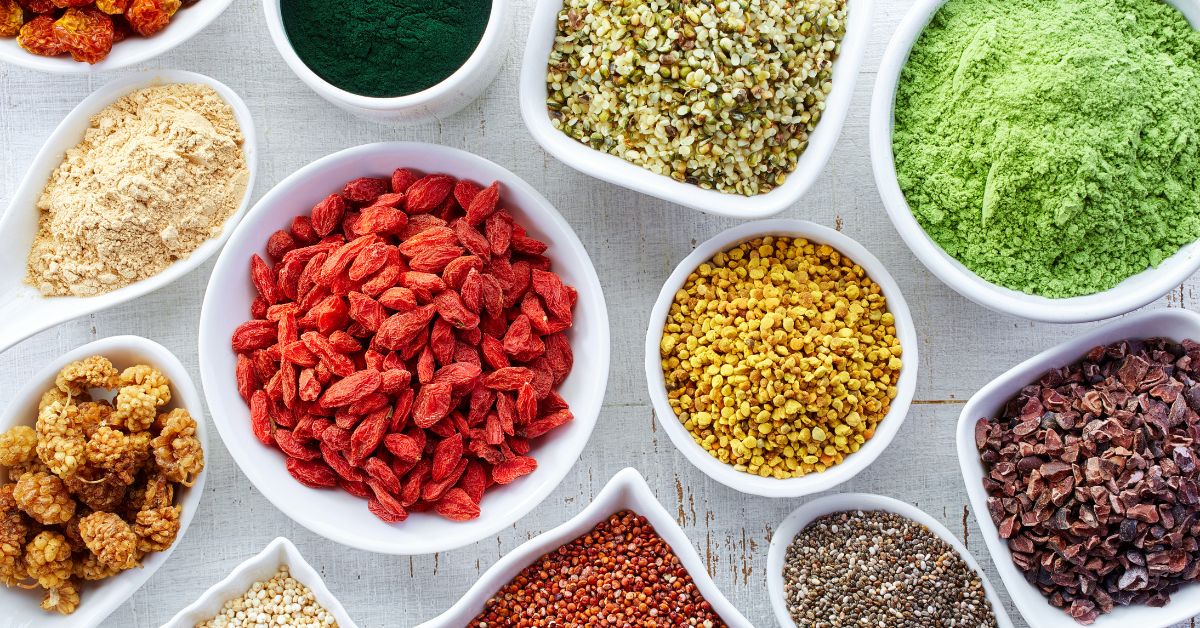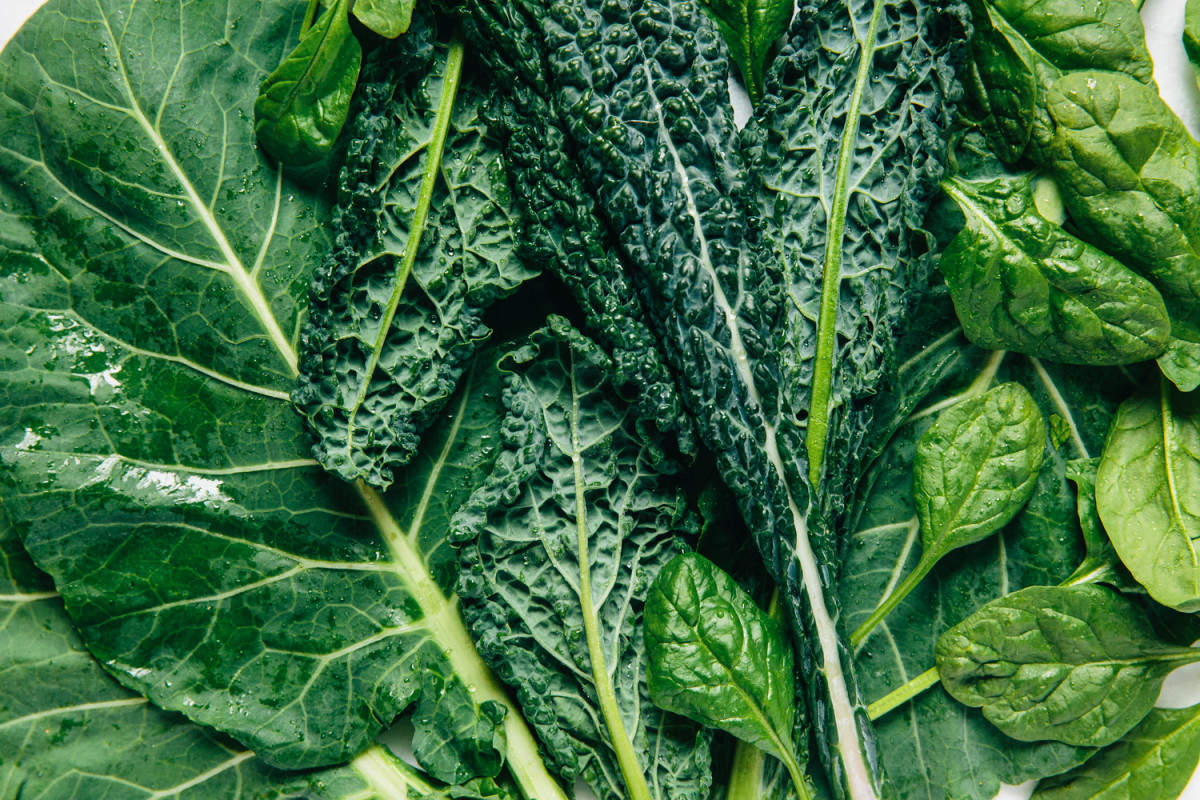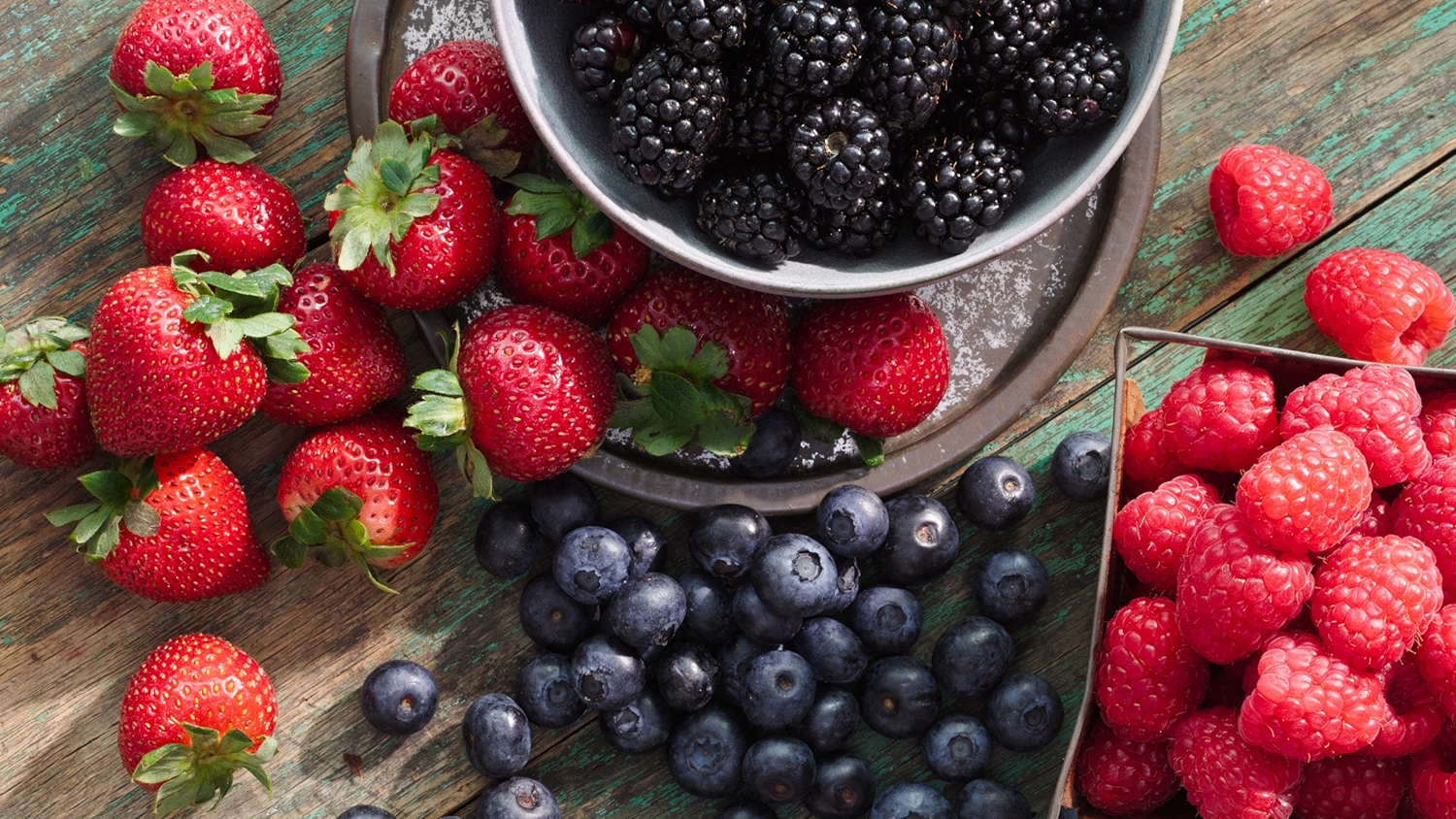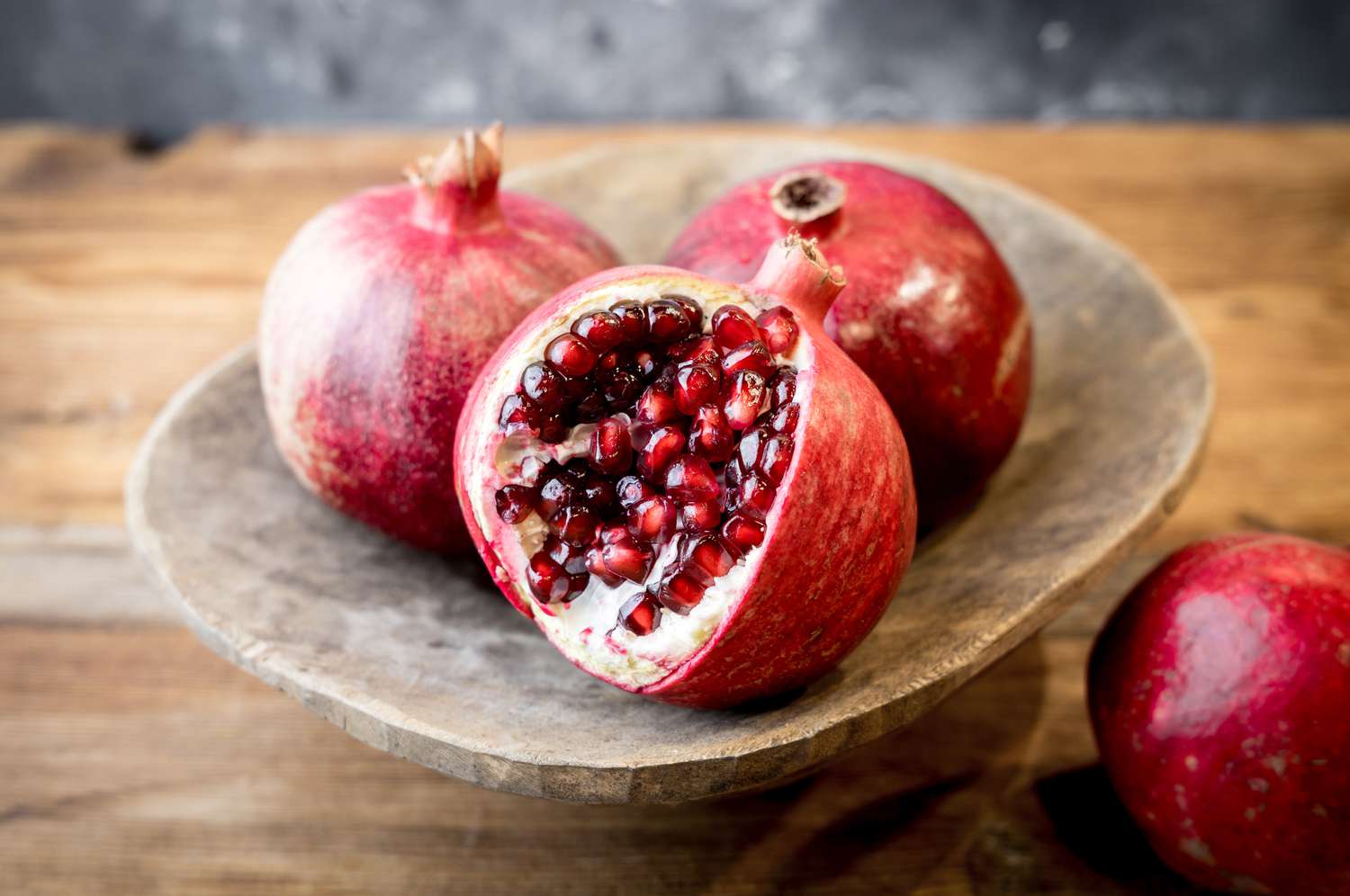Top 7 Superfoods And Their Benefits For A Healthy Lifestyle
Explore the world of superfoods and their benefits. From heart-healthy berries to inflammation-fighting ginger and turmeric, discover how incorporating these nutrient-dense foods into your diet can elevate your well-being. Embrace the power of superfoods for a journey towards enhanced vitality and reduced risks of chronic diseases.
Author:James PierceReviewer:Karan EmeryFeb 16, 2024730 Shares45.6K Views

You've probably encountered the term "superfoods" and their benefitsthat these nutrient-dense foods provide. Therefore, what precisely constitutes a superfood?
While the precise definition of a superfood is not universally agreed upon, these are foods that are nutritionally dense and supply the body with the necessary antioxidants, vitamins, and minerals for optimal functioning, survival, and well-being.
In addition to facilitating weight loss and meeting nutrient requirements, superfoods offer additional benefits that extend beyond the approach of swimsuit season. These nutrients have the potential to enhance one's health by mitigating the risk of numerous chronic diseases and promoting consistent improvement in mood.
Fermented Foods
Fermented foods abound in our culinary landscape, ranging from yogurt and pickles to sauerkraut and kimchi. Their growing recognition stems from their potential to enhance beneficial gut bacteria, a connection explored in studies that highlight their role in mitigating depression and lowering the risk of conditions such as high blood pressure, diabetes, and inflammation.
Registered Dietitian Stefani Sassos, serving as the Deputy Director of the Good Housekeeping Institute Nutrition Lab, emphasizes the ancient roots of fermented foods, noting their existence for millennia.
Natural fermentation occurs when microorganisms are already present in the food or surroundings, while other foods undergo fermentation by introducing starter cultures to kickstart the process. This transformative process not only elevates the taste and texture but also improves digestibility, amplifying concentrations of specific vitamins and compounds in the fermented foods.
The International Scientific Association for Probiotics and Prebioticsunderlines a crucial point: not all fermented foods harbor live cultures. Examples include soy sauce, most beer and wine, bread, and chocolate. Identifying fermented foods with live and active cultures becomes essential. Look for labels specifying strains, particularly in yogurt, kefir, aged cheeses, sauerkraut, non-heated fermented veggies, kombucha, and tempeh.
Considering the diverse options, incorporating fermented foods into your diet can be a flavorful journey. Sauerkraut, for instance, seamlessly complements various meals, enhancing the experience with burgers, rice bowls, and salads. Meanwhile, kimchi brings a distinctive twist to breakfast when paired with eggs, serving as a delectable side or topping.
Dark Leafy Greens
Dark green leafy vegetables (DGLVs) stand as a nutritional powerhouse, offering a spectrum of essential nutrients such as folate, zinc, calcium, iron, magnesium, vitamin C, and fiber. What elevates DGLVs to superfood status is their remarkable potential to lower the risk of chronic illnesses, notably heart disease and type 2 diabetes.
Beyond their nutrient richness, DGLVs boast high levels of anti-inflammatory compounds, specifically carotenoids, known to be formidable guardians against certain types of cancer. This dual prowess of providing essential nutrients while actively combating inflammation underscores the significant health benefits associated with incorporating DGLVs into your diet.
Among the well-known DGLVs are kale, Swiss chard, collard greens, turnip greens, and spinach, each contributing a unique blend of vitamins and minerals to the nutritional tapestry. While some DGLVs may carry a hint of bitterness, their versatility allows for creative culinary integration. Experiment with incorporating them into your favorite soups, salads, smoothies, stir-fries, and curries, transforming these nutrient-rich greens into delectable additions to your meals.
Cruciferous Vegetables
Within the cruciferous vegetable family, a distinguished array emerges, featuring members such as broccoli, cauliflower, Brussels sprouts, arugula, and more. These cruciferous vegetables, celebrated for their robust anti-inflammatory properties, stand as formidable allies in the ongoing battle against cancer.
Their nutritional profile is impressive, boasting richness in folate, as well as vitamins A, C, and K. Furthermore, they are teeming with antioxidants and phytonutrients, reinforcing their status as nutritional powerhouses.
Among the cruciferous vegetables, the spotlight often turns to broccoli and broccoli sprouts for their significant concentrations of the antioxidant sulforaphane. This phytochemical, extensively studied, showcases anti-cancer properties that exhibit the potential to impede tumor growth across various cancer types.
Notably, recent research highlights mustard seed as a potential superfriend, enhancing the bioavailability of sulforaphane up to four times when combined with cruciferous vegetables.
To incorporate these healthful gems into your culinary repertoire, consider Sassos' expert advice on cooking techniques. Opt for steaming, sautéing, grilling, or stir-frying, steering clear of boiling or deep frying, as the latter methods may compromise certain nutritional content.
Elevate your dining experience by grilling broccoli to perfection using arugula as a dynamic salad base or crafting a pesto, providing a delectable twist with a nutritional punch.
Berries
The potency of berries in promoting heart health is well-established, attributed to their elevated levels of flavonoids, which have demonstrated efficacy in lowering the risk of heart attacks. Within the realm of superfood berries, notable varieties include acai berries, blueberries, raspberries, tart cherries, cranberries, and goji berries.
Each of these berries offers a unique set of benefits:
- Acai Berries -Hailing from South America, these small, dark purple berries stand out for containing an impressive repertoire of 19 amino acids and a bounty of antioxidants.
- Blueberries -Renowned for their high fiber content, along with significant doses of manganese and vitamin K, blueberries emerge as a nutritional powerhouse. Additionally, cranberries, within this category, are rich in a specific flavonoid known for its efficacy in reducing the risk of urinary tract infections.
- Goji Berries -Originating from Asia, these small red berries are not only a rich source of vitamins C and E but also harbor diverse flavonoids. In Eastern medicine, goji berries are frequently employed to address conditions such as diabetes and high blood pressure, contributing to the maintenance of eye, liver, and kidney health.
The benefits of these berries extend beyond their delicious flavors. Their inclusion in a balanced diet offers a proactive approach to cardiovascular health, antioxidant support, and the potential management of various health conditions.
Ginger And Turmeric
Belonging to the Zingiberaceae family, both ginger and turmeric are rich in anti-inflammatory properties, making it challenging to favor one over the other, prompting us to celebrate the benefits of both.
Frequently found as co-stars in herbal teas and supplements, recent research indicates that their combined effectiveness as anti-inflammatories may surpass their impact. Acknowledging their potential, The Arthritis Foundation includes both ginger and turmeric among the recommended spices for individuals following an anti-inflammatory diet, particularly those dealing with arthritis.
Ginger encompasses the polyphenols gingerol and shogaols, not only imparting its distinct pungent flavor but also delivering a multitude of health advantages. These polyphenols play a role in enhancing digestion by stimulating saliva, proving beneficial for those grappling with dry mouth linked to conditions like diabetes.
Scientific studies also suggest that ginger contributes to improved gut motility, potentially alleviating nausea and vomiting, with potential applications in managing side effects associated with chemotherapy and pregnancy.
Turmeric, on the other hand, is rich in polyphenol curcumin, renowned for its multifaceted anti-inflammatory benefits. Recent research even draws parallels between curcumin and nonsteroidal anti-inflammatory drugs (NSAIDs), such as aspirin and ibuprofen, showcasing its potential in managing pain and discomfort associated with knee osteoarthritis.
To enhance its effectiveness, turmeric is often paired with black pepper, a combination that elevates its superpower benefits. Sassos emphasizes the role of black pepper in enhancing turmeric's bioavailability, facilitating a potential increase of up to 2,000%, thereby allowing individuals to harness the antioxidant and anti-inflammatory properties of turmeric more effectively.
Incorporating these dynamic ingredients into your culinary repertoire offers both versatility and health benefits. Ginger seamlessly integrates into both sweet and savory recipes, with ginger tea serving as a caffeine-free option that may aid with nausea. Whether added to stir-fries, marinades, or smoothies, ginger provides a flavorful twist.
Turmeric, best known for its golden hue, can be enjoyed in various forms, including the trendy turmeric latte, composed of turmeric, steamed milk, and spices of your choice. Additionally, its presence in stir-fries, roasted veggies, and even scrambled eggs allows for diverse culinary exploration.
Pomegranate
The pomegranate, a symbol of vitality, luck, fertility, and good health, has a rich history across multiple cultures and religions. The nutritional treasure lies in the seeds, known as arils, and the juice. Packed with four grams of fiber per serving, pomegranate seeds are also abundant in potassium, vitamin C, and antioxidants.
Studies suggest that this vibrant fruit may contribute to lowering blood pressure and cholesterol, though further research is needed. Recent investigations into pomegranate extract hint at its potential in alleviating inflammation in rheumatoid arthritis patients.
Pomegranate arils are rich in anti-inflammatory polyphenol antioxidants that combat free radical damage. Their anthocyanin content may also offer benefits such as blood pressure reduction and inhibition of cancer growth.
To incorporate the jewel-like pomegranate arils into your diet, Sassos suggests sprinkling them on yogurt parfaits and salads for a burst of color and flavor. Alternatively, adding them to a hummus or cheese board provides a refreshing and visually appealing twist.
Dark Chocolate
Dark chocolate emerges as a delectable superfood, renowned for its rich source of flavanols. These flavanols play a crucial role in safeguarding the heart and countering inflammation, with studies affirming their association with a reduced risk of heart disease. The heightened concentration of flavanols in darker chocolate sets it apart from other varieties, making it the preferred choice for maximizing health benefits.
Beyond cardiovascular advantages, dark chocolate exhibits mood-boosting potential by positively influencing gut bacteria, particularly when consumed in the form of 85% dark chocolate, according to studies. However, the importance of mindful consumption is due to chocolate's fat content, including saturated fat, which can transform a healthful snack into an unhealthy one if consumed excessively.
To strike the right balance, It is recommended to opt for dark chocolate with a cocoa percentage of 70% or higher, striking a harmonious blend of antioxidants and palatable flavor.
Navigating the chocolate landscape, caution against overly processed varieties that may compromise flavonol content. Instead, she suggests seeking out raw and natural options to fully harness the potential health benefits of cocoa.
Tips To Get The Most Out Of Superfoods
- Opt for superfoods that align with your taste preferences. Many nutrient-rich foods not only offer health advantages but also deliver delightful flavors. If a particular superfood doesn't appeal to you, explore alternative options that satisfy both your palate and nutritional needs.
- Elevate your nutrition by prioritizing plant-based foods. Strive to fill at least two-thirds of your plate with vibrant fruits, vegetables, and other plant-based superfoods during each meal.
- Prioritize whole produce over juices, whether canned or frozen. While juices and powders may seem convenient, opting for colorful and whole fruits and vegetables ensures the retention of valuable fiber.
- Prioritize open communication with your healthcare professionals, especially if managing a chronic condition. Seek advice from your doctor or dietitian to ensure that your chosen superfoods align with your health goals and do not interfere with medications or treatment plans.
People Also Ask
What Are The Best Superfoods For Weight Loss?
Superfoods like chia seeds, kale, blueberries, and quinoa are known for their nutritional density and can aid in weight loss when incorporated into a balanced diet.
Can Superfoods Prevent Chronic Diseases?
Certain superfoods, rich in antioxidants and anti-inflammatory compounds, may contribute to preventing chronic diseases. Examples include berries, leafy greens, and fatty fish.
Are Superfood Supplements As Effective As Whole Foods?
While supplements offer convenience, whole superfoods provide a broader range of nutrients and fiber. Whole foods are generally considered more effective for overall health benefits.
What Superfoods Are Good For Boosting Immunity?
Superfoods like citrus fruits, garlic, ginger, and yogurt are known to support immune function by providing essential vitamins, minerals, and probiotics.
Can Superfoods Improve Mental Health?
Yes, superfoods such as fatty fish, walnuts, and dark chocolate contain nutrients that support brain health, potentially improving mood and cognitive function.
Final Words
The world of superfoods unveils a treasure trove of nutritional wonders, offering a holistic approach to well-being. From heart-healthy berries to inflammation-fighting ginger and turmeric, and mood-boosting dark chocolate, these nutrient-dense foods showcase the potential to elevate our health on multiple fronts. The key lies not just in their benefits but in the synergy of a varied, plant-powered diet.

James Pierce
Author

Karan Emery
Reviewer
Latest Articles
Popular Articles



